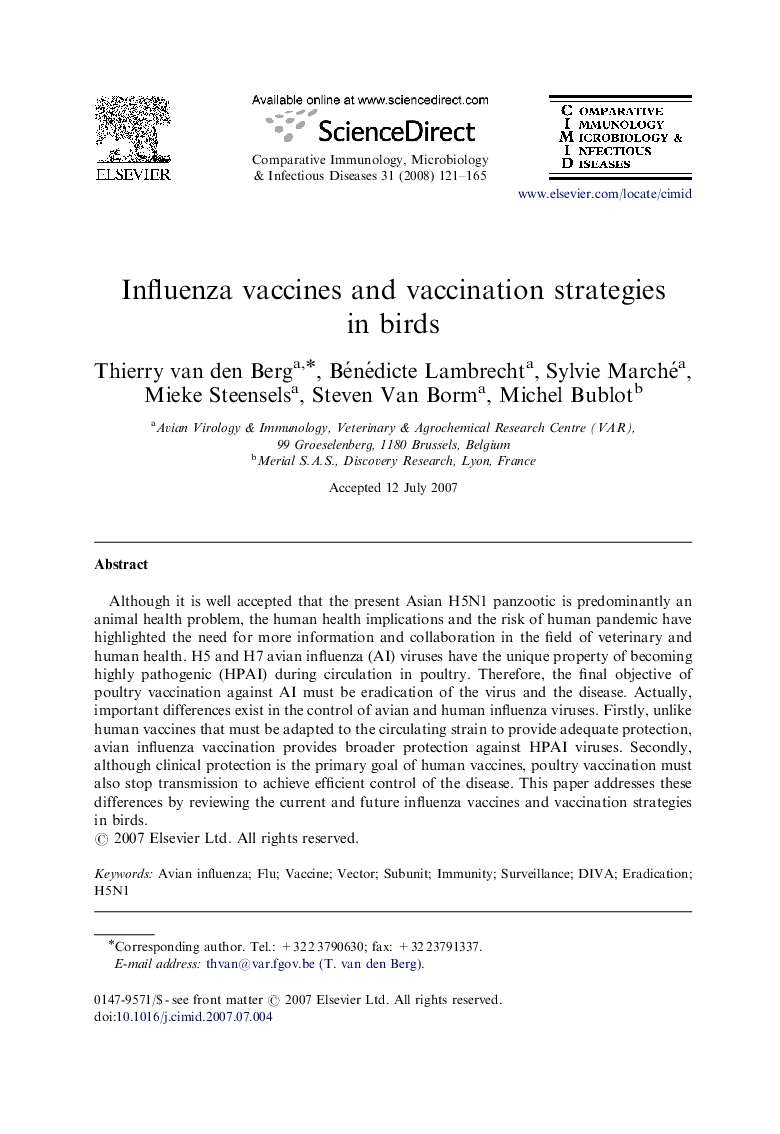| Article ID | Journal | Published Year | Pages | File Type |
|---|---|---|---|---|
| 2428478 | Comparative Immunology, Microbiology and Infectious Diseases | 2008 | 45 Pages |
Although it is well accepted that the present Asian H5N1 panzootic is predominantly an animal health problem, the human health implications and the risk of human pandemic have highlighted the need for more information and collaboration in the field of veterinary and human health. H5 and H7 avian influenza (AI) viruses have the unique property of becoming highly pathogenic (HPAI) during circulation in poultry. Therefore, the final objective of poultry vaccination against AI must be eradication of the virus and the disease. Actually, important differences exist in the control of avian and human influenza viruses. Firstly, unlike human vaccines that must be adapted to the circulating strain to provide adequate protection, avian influenza vaccination provides broader protection against HPAI viruses. Secondly, although clinical protection is the primary goal of human vaccines, poultry vaccination must also stop transmission to achieve efficient control of the disease. This paper addresses these differences by reviewing the current and future influenza vaccines and vaccination strategies in birds.
RésuméBien qu’il soit à présent bien accepté que la panzootie au virus H5N1 asiatique soit avant tout un problème de santé animale, ses implications sur la santé publique et le risque de pandémie ont montré le besoin de plus d’information et de coordination entre le monde médical et le monde vétérinaire. Les virus du sous-type H5 et H7 ont l’unique propriété de devenir hautement pathogènes (IAHP) lors de leur circulation chez la volaille. Dès lors, l’objectif final de la vaccination de la volaille est l’éradication de la maladie. En fait, il existe d’importantes différences entre le contrôle de l’influenza aviaire et celui de la grippe chez l’homme. Premièrement, contrairement aux vaccins humains qui doivent être ajustés aux souches circulantes pour procurer une bonne protection, les vaccins aviaires fournissent une plus large protection contre les souches IAHP. Deuxièmement, alors que le but premier des vaccins humains est la protection clinique, les vaccins aviaires doivent aussi réduire la transmission du virus de manière à permettre le contrôle de la maladie. Cet article tente d’aborder ces différences en passant en revue les vaccins actuels et futurs contre l’influenza et les différentes stratégies de vaccination chez la volaille.
